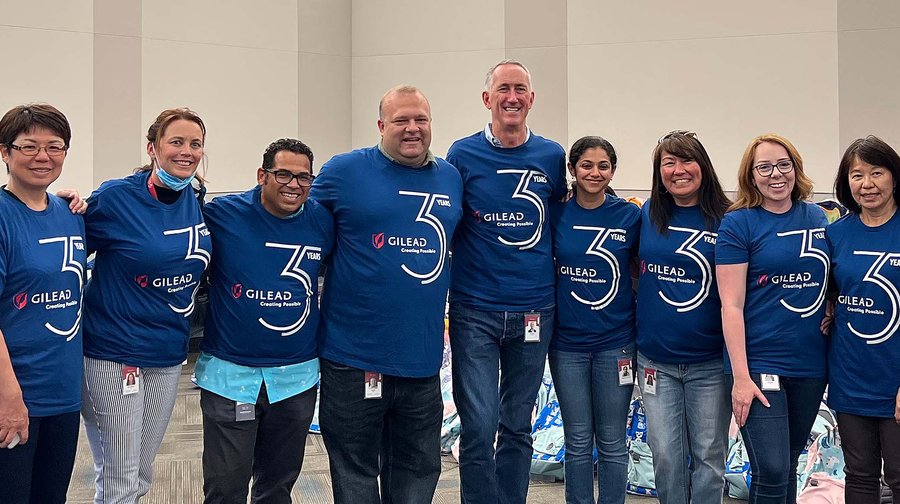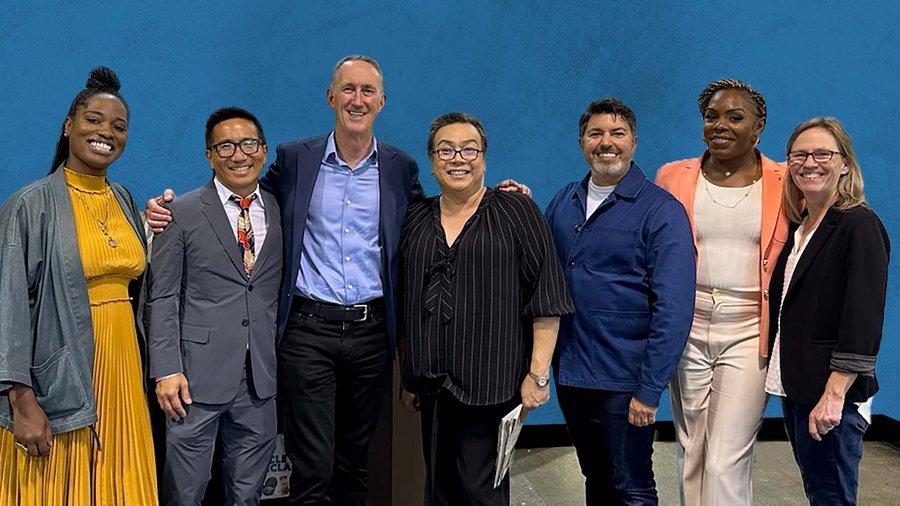Much has changed since Daniel O’Day, chairman and CEO, arrived at Gilead Sciences in 2019. The company has grown considerably and expanded on its long-standing leadership in antiviral therapies to include a focus on cancer medicines. Today the Foster City-based company is the second-largest biotech employer in the Bay Area, and according to a Bay Area Council report, it created an estimated economic impact of $22.1 billion in 2020 alone. It has more than 25 marketed therapies for HIV, cancer, hepatitis, COVID-19 and other diseases, and one of the strongest and most diverse pipelines of new medicines in its history.
Below, O’Day talks about the company’s focus, philanthropic culture and commitment to the local community.
Gilead has grown significantly since you became CEO in 2019, and now has more than 18,000 employees. What is the reason for your expansion?
Gilead has long been the global leader in antiviral therapies. This is the company that helped turn HIV from a death sentence to a chronic, manageable disease and developed a cure for a form of viral hepatitis. Our aim is to build on this by expanding our leadership in HIV through, for example, long-acting treatment and prevention while also applying Gilead’s many strengths to find new breakthroughs for cancer. We’ve nearly doubled the number of scientific programs we are working on, and we’ve launched five new therapies since 2019. We have an ambition of launching 10 or more transformational therapies by 2030, and I’m pleased to say we are well on our way to achieving that. Scaling up the business to this degree requires a larger workforce and new capabilities. We’ve been very fortunate in the caliber of people we’ve been able to attract, both from within the Bay Area and from across the country and beyond.
To what do you attribute your success in attracting talent, especially given the competition for talent in the Bay Area?
We hear that there are three things that bring people to Gilead: our purpose, our science and our culture. More than ever today, people want to work for a company whose mission aligns with their personal values. Our mission of making the world a better, healthier place through both innovation and health equity is one that resonates. In our employee surveys, the sense of purpose is one that always comes up as something that people most appreciate about Gilead. On the science side, there’s tremendous respect for Gilead’s long-standing expertise and people are excited to get to build something together as we expand into new areas. Our broad pipeline of cancer medicines has been a significant draw for talent in oncology. The third key factor in attracting and retaining talent is our culture. Gilead is a special place with an entrepreneurial feel to it but with the resources of a big company. We put a strong emphasis on creating an inclusive and diverse environment, and we have invested in several new facilities and programs to support employee well-being.

Part of Gilead’s culture is also supporting and partnering with community organizations. Why are these partnerships critical to its mission to make the world a healthier place?
At Gilead, we’re focused on fighting devastating diseases and delivering innovative medicines that offer new hope for patients. Also important, though, is our work to make sure that we remove barriers to care and reach the people that need our therapies. We know from decades of experience that local organizations are in the position to best understand what works to serve their communities, and we consider our support of those on the ground fundamental to our mission. To that end, we routinely partner with organizations whose mission aligns with ours, and we learn from them so we know how to make the most impact. I’ve been fortunate to be able to visit many of our local community partner organizations. Last fall, for example, I met with leaders of the San Francisco Community Health Center, an organization that we’ve supported for nearly a decade. Located in the Tenderloin, its mission is to advance health and wellness in the community – and I was inspired by the work the center is doing to help and provide care for vulnerable individuals.
In 2023, Gilead was named “one of the most important players in corporate philanthropy” by Inside Philanthropy. Can you share some highlights from the company’s giving efforts?
Last year, we continued to support many groups focused on HIV, hepatitis and oncology, including eight Bay Area organizations focused on cancer care. Among them is the San Francisco-based Shanti Project, which aims to help women navigate life after a cancer diagnosis. We also support many organizations through the Gilead Foundation, which focuses on the social, economic and environmental factors that impact well-being. Last year, we awarded San Francisco State University with $3.5 million in grant funding for its new Science and Engineering Innovation Center, which is set to open this year. Recently we gave a $500,000 grant to the San Mateo-Foster City School District to support STEM efforts. The foundation also has a Giving Together matching program that enables our employees to give back. We care deeply about making the world a better place and supporting our local community, and we provide employees with the opportunity to make an impact.
Visit Gilead.com to learn more.
